Most of us know the important role strength training plays in sports. This also applies to soccer, where the quality of technical skills is fundamental. During the 2022-2023 season, with the help of Fabio Zonin, StrongFirst Certified Master Instructor, I designed a training program based on StrongFirst principles for Pro Vercelli Calcio a soccer team in the Italian Third Division (Third League). By implementing this program, I brought innovation and a unique methodology to the world of soccer (see my previous article).
This season, in collaboration with our sport-specific coach, I changed some of the strength exercises I programmed for my athletes. Of course, I continued to program fundamental motor patterns, especially hip dominant patterns (hip hinge) and knee dominant patterns (squat). But I replaced the Zercher squat with the back squat (a push exercise) and the two-arm swing with the deadlift (a push-pull exercise). Last season I used the Bulgarian squat (a one-leg exercise). And because it yielded wonderful results, I did not replace it with an alternate movement.
The upper body training I programmed last season included the half-kneeling landmine press, pullups, bench press, and the single-arm kettlebell row. Because the results were so effective, I decided to add an additional strength session focusing on these movements—going from two to three training sessions per week.
In this article, I will break down the strength training strategies used this season. I must thank Fabio for his valuable suggestions that made this programming simple and successful.
Lower Body
Phase I—Pre-season preparedness
Back squat and deadlift
From the first day of pre-season training camp, I worked on the players’ squat and deadlift techniques, so that when they started their first strength training session, they were able to effectively use the barbell.
During the initial phase, we increased the volume from 1 to 5 reps (see Table 1) based on the quality of each player’s technique. The load the athletes used could not change the correct technical execution of the lift and had to allow some reps in reserve (at least 2-3 reps) in sets with higher reps. The lifts were trained alone in a dedicated strength session two times a week.
Along with the volume, we consistently increased the weight every two sessions, basing the weight jump on the athlete’s technique and strength level.
This progression and adaptation of the load continued for almost five weeks, during which we completed eight sessions of specific strength training for the lower body. These eight sessions did not include the introductory sessions performed during the first days of pre-season training camp. At the end of the pre-league championship season, we established 60% of each athlete’s one-rep max (1RM) in the squat and 70% of their 1RM in the deadlift. We selected a load the athletes were able to lift for 8-10 reps in the deadlift and for 12-14 reps in the squat (to parallel).

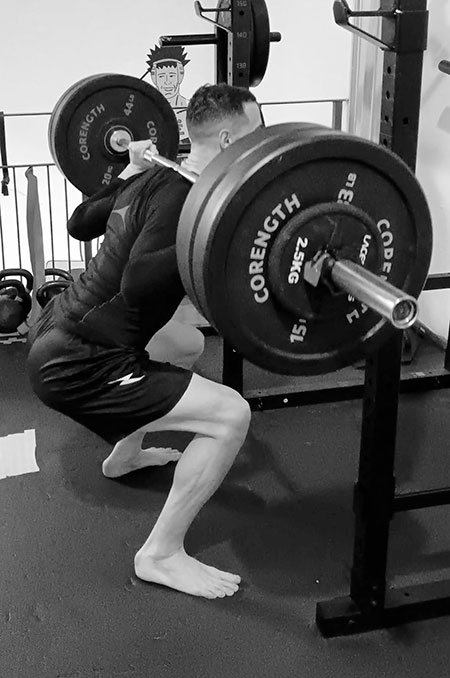
Bulgarian squat
After an initial phase of adaptation, in which the athletes only practiced with their bodyweight, we trained the Bulgarian squat with the same progression we used last year. The athletes started with a 12kg kettlebell and for the entire season we followed a step cycle program (see Table 2).

Phase 2—18-week in-season preparedness
During the competitive season, one lift was trained for a three-week cycle during which the intensity was increased, and the volume was reduced (BLOCK A1). The second lift was trained for strength maintenance only (BLOCK B1). At the end of the three-week cycle, the work scheme was reversed. Table 3 summarizes the training plan.
It should be emphasized that the lifts were trained only once a week, usually on the second day of training in a dedicated strength session.

My goal for the back squat and the deadlift was to make my athletes stronger. I didn’t set a limit. I wanted each athlete to reach at least a 1RM in the back squat equal to or greater than 1.5 bodyweight and at least a 1RM in the deadlift equal to 1.7/1.8 bodyweight.
During the season, I programmed the Bulgarian squat as shown in Table 4:
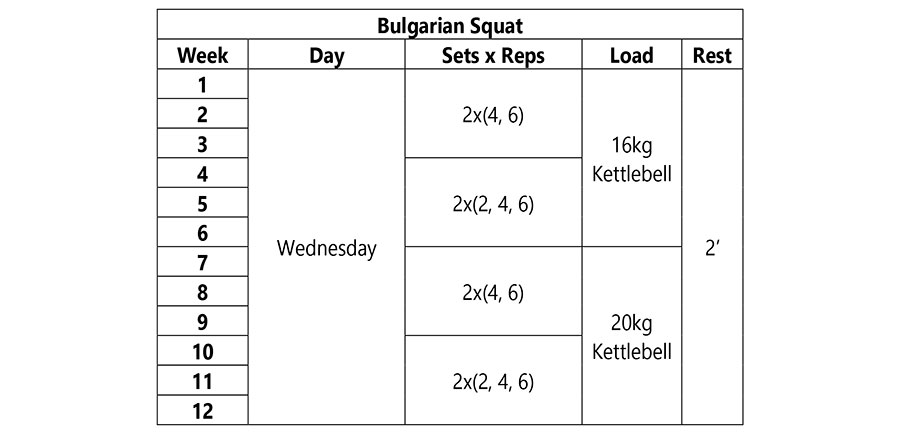
For the Bulgarian squat, my goal for each athlete was to eventually complete the entire volume 2x (2, 4, 6) with at least a 24kg kettlebell or a weight that was around 1/3 of the athlete’s bodyweight, but not exceeding a 32kg kettlebell.
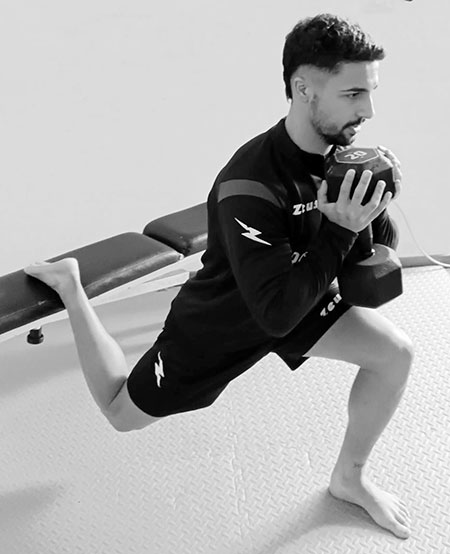
Phase 3—14-week in-season preparedness
In January, following Fabio’s suggestions, we performed an indirect test to find the athletes’ back squat and deadlift 1RMs. The athletes performed two simple tests; they had to lift two different weights, one for 3 to 5 reps and the other for 8 to 10 reps respectively. After they completed these tests, we calculated the 1RMs for each lift following an algorithm created by Fabio.
Our results can be seen below in Table 5:
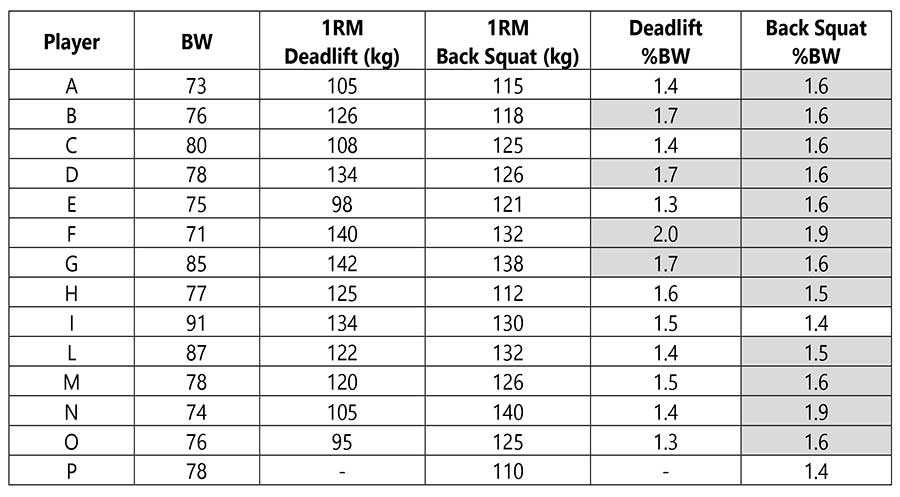
At this point, given the strength levels achieved, especially in the back squat, I decided to continue the programming following a new strategy based on Pavel’s Easy Strength and StrongFirst’s Plan Strong™ principles. I programmed every lift ensuring that the average relative intensity (ARI) did not vary over the sessions and modulated the volume with a die roll. The players trained each lift once a week, leaving the second lift in “maintenance” mode, performing 6 sets of 3 reps with 70% of their 1RM (Table 6).
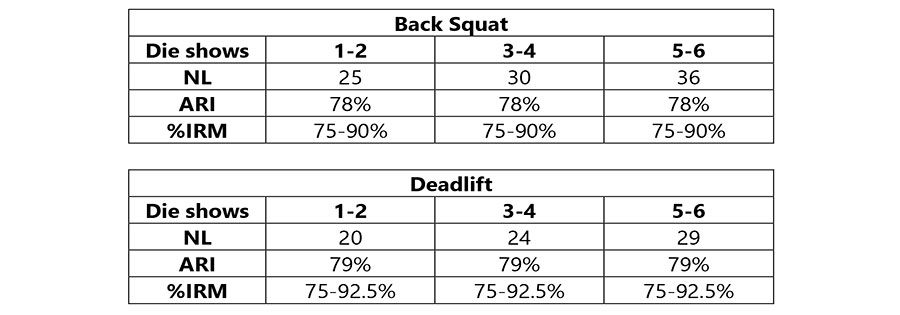
When the die showed the same number for two weeks in a row, I rolled it again. Volume variability during these weeks was the main factor for the training stimulus.
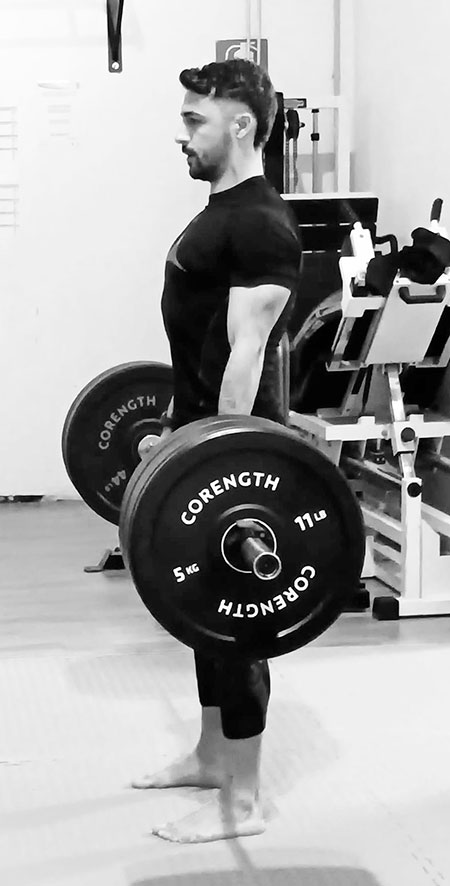
Phase 4—2-week play-off preparedness
Once we reached the play-offs, I wanted to substantially change the strength work by modifying both the intensity and the volume. I switched the deadlift into “maintenance” mode by using a load corresponding to 70% of their 1RM and trained it as a motor pattern (hip hinge) movement with the goal of maintaining strength. I played with the weights the athletes used for the back squat, focusing on strength stimulus. Both lifts were around an ARI of 76%.
Upper Body
Phase I—In-season preparedness (September-December)
An athlete that is strong not only in the lower limbs, but in his entire body can better express his physical qualities and levels of strength during a match.
Before afternoon training, starting at the beginning of training camp, the athletes performed a small circuit of fundamental exercises to increase their conditioning level. These same exercises continued throughout their in-season training.
Differing from last season, the first two sessions focused on improving maximal strength while the third was more metabolic, i.e., we focused on stimulating muscle growth (hypertrophy). The sessions were performed on the first, third, and fourth training day of the week. We consistently followed this schedule regardless of the skill level of our opponent on Sunday.
Tables 7a and 7b (below) break down the sessions and the movements/exercises:
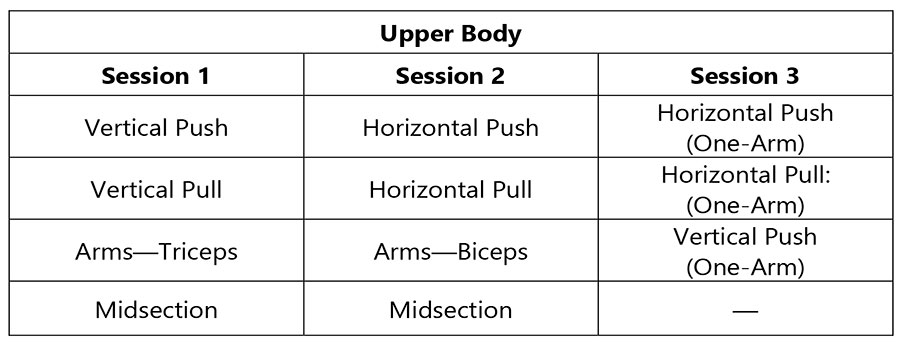
The corresponding exercises were:
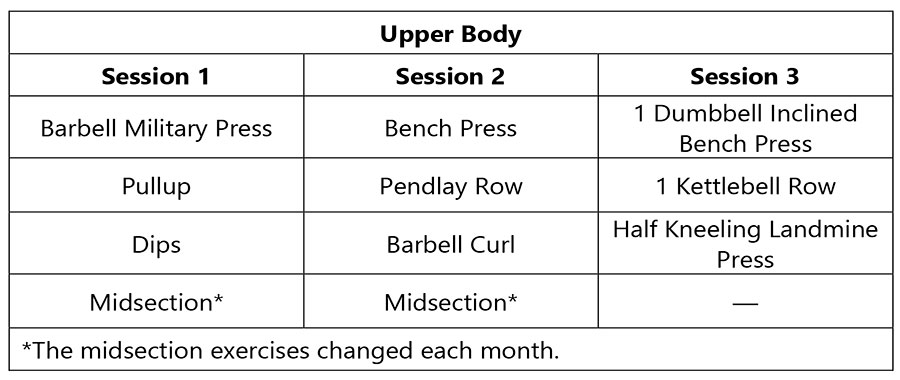
Phase 2—In-season preparedness (January-May)
After about four months of training, I substantially modified the work by adding a second session for the main lifts. This decision was based on the athletes’ improvements and the need to increase the workload while fulfilling the requests of the players, who were interested in improving muscle tone.
Below (Tables 8a and 8b) is the breakdown of the sessions and the movements/exercises:

The corresponding exercises were:
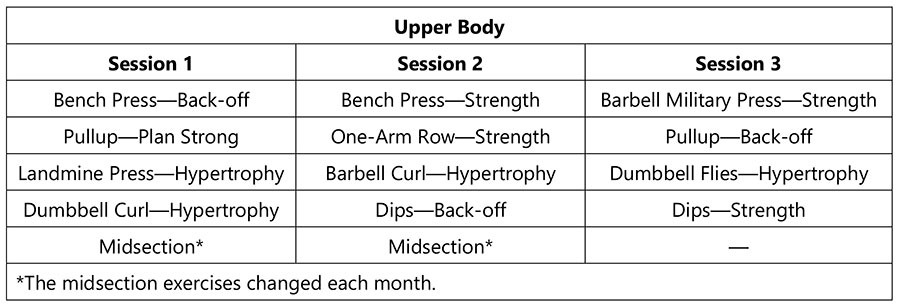
Final Thoughts
The players enjoyed the work done this year, as well as the training programmed last season. Training was very stimulating, despite the challenges we had.
Programing only two lifts as basic exercises for building strength is an excellent training strategy. Perhaps, in the future, we could consider slightly increasing the volume for both lifts and splitting the training into two sessions. This would serve a dual purpose: first to grease the groove of the motor pattern and second to provide a second stimulation to build strength. Furthermore, close to a match, it is appropriate to include more explosive strength work and maybe monitor it with an instrument that measures the speed of the movement.
The periodization of this program helped improve the strength levels of all my players. We saw gains both in the weights lifted but also in the aesthetic component—all players showed a more defined and muscular upper body. Considering that soccer is a movement sport, the levels of maximum strength achieved certainly contributed to improving game performance, especially in sprinting, acceleration, and changes in direction.
We achieve these results by training just two main lifts, adding one unilateral exercise, and using well-defined and structured programming.
Through this experience, I believe that this is the correct path to follow, and I will continue to use StrongFirst programming to increase the athletic abilities of my players in the future.
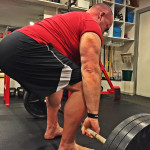
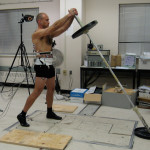

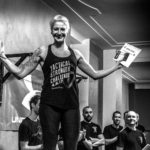
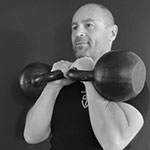

Hi Mauro,
when performing the Bulgarian Split Squats (2, 4, 6), do you switch legs after completing one set of the given number of reps or do you complete two reps left, two reps right etc. How long should you pause within a ladder?
Hi Simon
the players did two reps right and two reps left and then a pause. There was no pre-defined time. They certainly shouldn’t have felt too tired so as not to compromise their technique.
Love it! More sports S & C content please.
Great article-thanks for taking the time to document and post this!!!
Thank you very much Dan for yours kind words
Mauro,
Thank you for the article. Have you noticed a reduction in injuries due to using the Strongfirst principles versus the historic weight training methods?
Hi Jarrod
as you know, the cause of injuries is multifactorial. Raising strength levels it seems to be good prevention work. However, I recorded a really low number of muscle injuries compared to other years where I trained less strength.
Ciao Mauro. I’m a little confused on how many total sessions per week in-season. Was it two lower body (squat and DL one day, Bulgarian squat one day) and three upper body? And were upper/lower on the same day? Grazie.
Hi Mark,
we did one session for the lower body and three sessions for the upper body a week. When we trained the lower body we did Squat, DL and Bulgarian in the same session. The upperbody was trained in different days in the same week.
Hope it make sense.